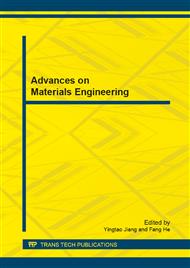p.186
p.191
p.199
p.204
p.209
p.217
p.222
p.227
p.235
Silk Fibroin/Hyaluronic Acid Blend Film with Good Water Stability and Cytocompatibility
Abstract:
Stimulating cell proliferation is a challenge in the field of silk fibroin-based biomaterials. In this study, silk fibroin/hyaluronic acid blend films were prepared by a casting method using carbodiimide as a cross-linking agent. Carbodiimide induced silk fibroin to form Silk I crystal structure which was not affected by the presence of hyaluronic acid. The films showed high water resistance. In vitro, the performance of these films was assessed by seeding L929 cells. The results indicated that the silk fibroin/hyaluronic acid blend films with the blend ratio of 80/20 and 60/40 promoted cell proliferation compared with the pure silk fibroin or hyaluronic acid film. These results suggest that silk fibroin/hyaluronic acid blend films are water stable and cytocompatible materials which are expected to be useful in biomedical applications.
Info:
Periodical:
Pages:
209-214
Citation:
Online since:
August 2013
Authors:
Keywords:
Price:
Сopyright:
© 2013 Trans Tech Publications Ltd. All Rights Reserved
Share:
Citation:


